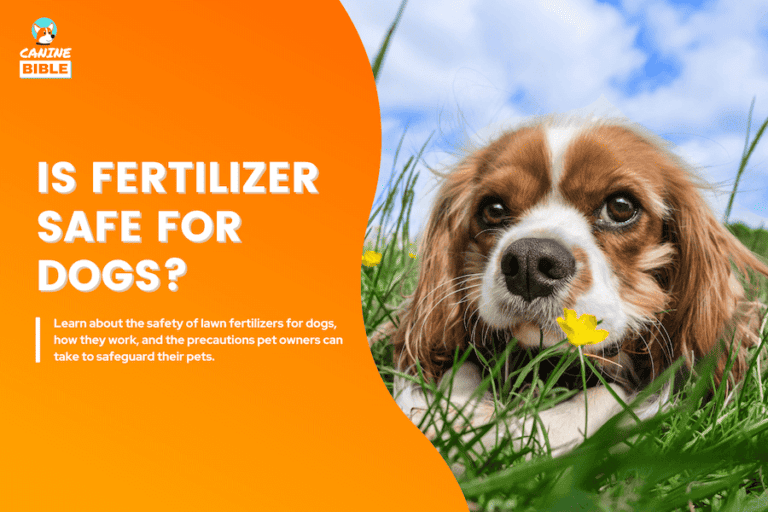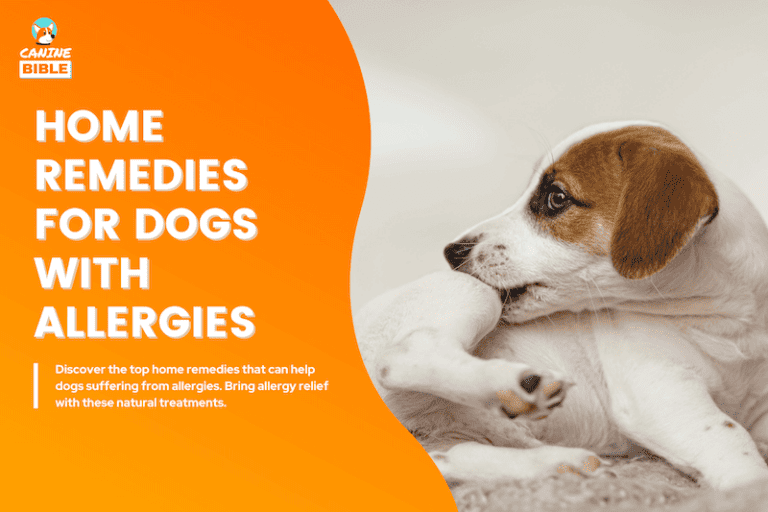Underbite In Dogs & Puppies: Can It Be Fixed? Correction Cost & Treatment
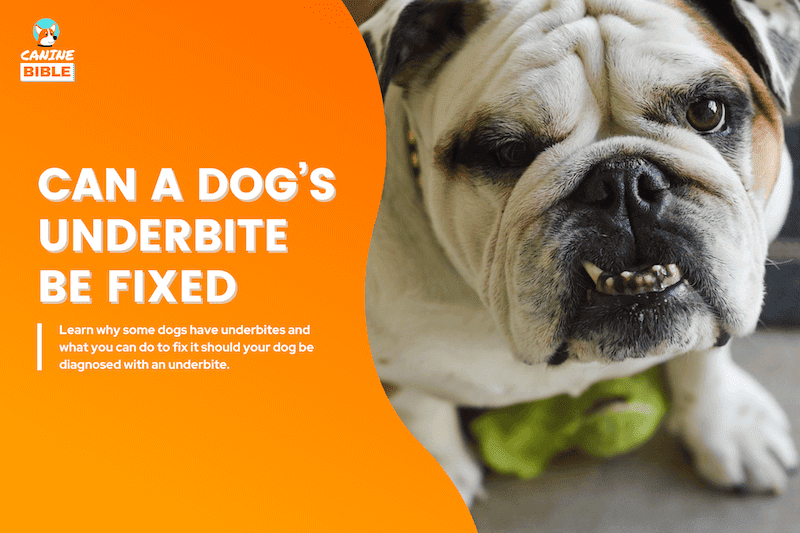
Canine Bible is reader-supported. We receive affiliate commissions via some of our links. This doesn’t affect rankings. Learn more.
This guide provides a comprehensive overview of underbites in dogs. Do you have a dog with an underbite? Are you concerned about how it might affect their health? An underbite in dogs is more than a mere cosmetic issue. While many dogs can adapt and live comfortably with mild cases, more severe underbites can lead to significant oral health problems. This article will explore the intricacies of underbites in dogs, from their causes and symptoms to the various treatment options available. Let’s dive in!
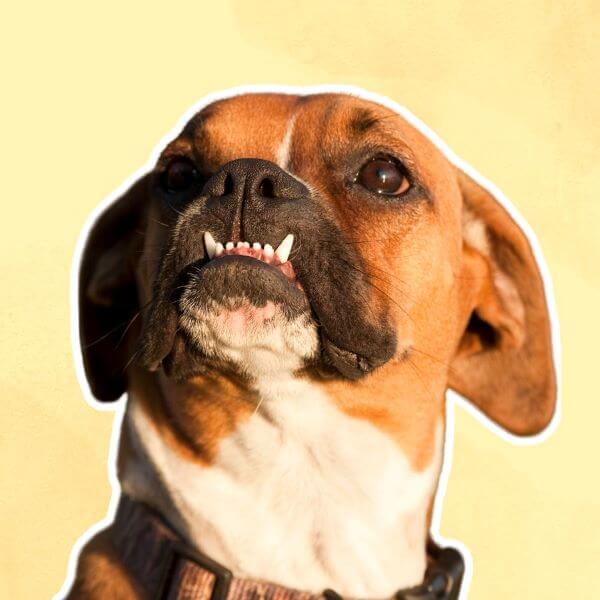
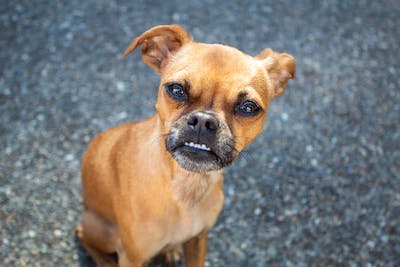
An underbite creates a bulldog-like
appearance in the mouth and face.
What is An Underbite Dog?
A dog underbite is a dental or skeletal condition characterized by lower teeth (mandible) that extend outward farther than the upper front teeth (maxilla), causing the bottom teeth to sit in front of the top teeth when the mouth is closed. This condition is also called a Class-3 malocclusion or mandibular prognathism.
Malocclusion in dogs causes an abnormal teeth alignment, resulting in an abnormal bite. A dog whose lower jaw is protruding and with the bottom teeth sticking out when at rest is known as an underbite dog.
In certain cases, dogs might display an asymmetrical underbite, where the protrusion is more prominent on one side of the jaw than the other. Signs your dog may have an underbite include
Types of Malocclusions In Dogs
This article focuses on “class 3 malocclusions,” also known as an underbite. However, understanding these types of malocclusions is crucial when addressing this condition with your veterinarian.
Class 1 malocclusion
Also known as a neutrocclusion is a type of dental misalignment where the bite is normal, but individual teeth are misaligned or positioned incorrectly, causing the malocclusion.
Class 2 malocclusion
A class 2 malocclusion in dogs, also referred to as distocclusion or an overbite, is a type of dental misalignment where the upper jaw (maxilla) is disproportionately longer than the lower jaw (mandible), leading to an overlap of the upper teeth over the lower teeth.
Other less common types of malocclusions include:
What Causes Underbite on Dogs?
The level of difficulty in terms of treatment and fixing a dog’s underbite varies depending on what caused it. The most common causes of underbites in dogs include dental issues, skeletal or developmental issues, genetics, or accidents.
Dental
Dental issues are arguably the leading cause of malocclusion in dogs. According to Dr. Santiago Peralta, Assistant Professor of Veterinary Dentistry and Oral Surgery at Cornell University College of Veterinary Medicine (CUCVM), dental underbites often occur when one or a few teeth are abnormally positioned within a normal facial skeletal structure.[1]
A common scenario for a dental underbite is when a baby tooth fails to fall out, remaining in place as a permanent tooth emerges. This leads to crowding among the teeth, resulting in abnormal positioning and the characteristic underbite appearance in your dog.
This particular cause of underbite in dogs is relatively easy to correct. Sacramento Veterinary Dental Services recommends that the primary teeth (interceptive orthodontics) be extracted as soon as possible to address the issue.[2]
Skeletal
Dr. Nadine Fiani, Assistant Clinical Professor of Dentistry and Oral Surgery at CUCVM, explains that skeletal malocclusion occurs when a dog’s facial structure is abnormal, preventing the teeth from fitting together correctly. Skeletal underbites in dogs can be more problematic than dental underbites. An abnormal bone structure in the mouth may cause the canine teeth or maxillary incisors to make abnormal contact with the gums, leading to severe distress and damage to the dog’s teeth and gums. This can accelerate the rapid onset of periodontal disease.
Genetics
Dr. Peralta notes that malocclusion in dogs is typically hereditary, indicating that the condition is likely to be passed down from generation to generation. He explains, “[A dog underbite] will be acquired, whether because something happened during gestation or growth and development. The condition can develop due to an infection, trauma, or other event that may alter maxillofacial [face and jaw] growth.”
Accidents
An underbite in dogs can also result from improperly healed jaw fractures. Facial and jaw trauma, whether from bites, accidents, or incidents like being struck by a car, can lead to the development of an underbite in your dog.
How to Fix A Dog Underbite
Can a dog’s underbite be fixed? Are there treatment options available? The answer to both questions is ‘yes.
Fortunately, most underbites in dogs do not require any treatment, especially if they’re not causing any harm to the dog’s mouth, such as preventing chewing or swallowing. However, if an underbite leads to potential health issues, treatment options generally fall into one of three categories:
Dog Underbite Correction Cost
The cost of correcting an underbite in dogs can vary widely depending on several factors, including the severity of the condition, the type of treatment required, the geographical location, and the specific veterinary clinic or specialist involved. Generally, the treatment cost of malocclusion in dogs usually fluctuates between $1,500 and $5,000. Dogs are expected to visit the vet weekly or biweekly throughout the process.
Here’s a general breakdown of potential costs:
Initial Consultation
The first step, the veterinary assessment, can range from $50 to $150 or more.
Diagnostic
Cost
Depending on the complexity, X-rays and other diagnostic tests can cost between $200 and $500.
Treatment
Orthodontic treatment can cost from $1,500 to $4,000. The cost ranges from $2,000 to $5,000 or more for severe cases requiring surgery, depending on the complexity.
Follow-Ups
Regular check-ups and adjustments are necessary and can add to the overall cost. Each visit might cost anywhere from $50 to $200.
What Dog Breeds Have An Underbite?
Any dog breed can develop an underbite. However, underbites are particularly common in brachycephalic breeds – those with shorter heads and flat faces. Here are some of the breeds that are most commonly associated with underbites:
Dog Underbite Health Risks
Puppy Underbite
Underbites in puppies can sometimes be corrected with braces, although extraction and filling might also be necessary. The treatment choice for a puppy with an underbite depends on the type of malocclusion, age, overall health status, and other factors. Similar to adult dogs, puppies with underbites are susceptible to health issues. If your puppy has an underbite, it’s essential to seek veterinary attention to determine whether it adversely affects your pet’s health.
Can Puppy Underbite Correct Itself?
Most dogs that exhibit underbite symptoms as young puppies will likely retain this condition throughout their lives. While this misalignment may sometimes self-correct as the puppy matures, it’s highly unlikely in cases where the dog is genetically predisposed to an underbite. In some instances, an underbite in dogs can be corrected through surgical procedures or braces.
Do Puppy Underbites Get Worse?
An underbite is typically a permanent condition that does not generally worsen with age. Most dogs with underbites do not experience significant problems. However, the primary concern arises when misaligned teeth rub against each other, potentially creating wounds within the gums or on the hard palate.
What to Do If My Dog Has An Underbite?
If you suspect your dog has an underbite, taking proactive steps to ensure their health and comfort is important. Here’s what you should do:

Consult a veterinarian: If your dog shows any of the previously mentioned symptoms, it’s crucial to consult your veterinarian. During the visit, they will perform an examination to look for signs of pain and infection, diagnose the condition, assess its severity, and recommend suitable treatment. If you have concerns, you can request a dental radiograph (X-rays), which effectively identifies most oral diseases in dogs.
Implement good oral hygiene practices: A regular dental care routine is crucial for dogs with underbites. Regularly brushing your dog’s teeth and providing dental chews can help maintain oral health. We recommended using Bark Bright Dental Kit, a veterinarian-formulated enzymatic toothpaste requiring no toothbrush, which contains three enzymes that break down debris causing bad breath, promoting a fresher breath and a cleaner mouth. This is particularly beneficial in reducing the risk of periodontal disease, which is common in dogs with underbites and affects 80% of dogs by age 3. Finally, dogs with underbites often develop excessive tartar and calculus build-up. To combat this, consider using a Dental Formula Water to help keep your dog’s teeth and gums healthy.
Monitor dental health: It’s important to schedule regular dental check-ups to monitor the underbite and for signs of discomfort, inflammation, or infection.
Adjust feeding practices and avoid hard, dry dog food: Soft or wet food can be easier to chew and digest for dogs with an underbite than hard, dry kibble. Consider switching to softer dog food options and using specially designed feeding bowls to facilitate comfortable eating. Dogs with underbites may struggle to chew hard food. A soft-textured food like Nom Nom could be ideal. This can help alleviate stress on your dog’s teeth during mealtime.
Monitor your dog’s behavior: Keep an eye on your dog’s eating habits and behavior. Difficulty eating, changes in behavior, or signs of discomfort should be promptly addressed.
Choose soft treats and toys: For dogs with underbites, opting for softer treats is advisable. Consider soft-baked dog treats like freeze-dried. Additionally, providing a gentle chewing toy, such as the Chuckit! Roller Dog Toy can be beneficial. Its textured chenille fabric is designed to be gentle on a dog’s mouth.
Dog Braces For Underbite: Underbite Correction Video
Watch this cute 6-month-old golden retriever puppy with braces after an orthodontic procedure to correct his underbite!
Dog Underbite Frequently Asked Questions
Should You Worry About Correcting Your Dog’s Underbite?
While not all dog underbites pose a health risk, neglecting them can lead to serious health issues. As a responsible dog owner with an underbite, it’s important to regularly check for any developments that might lead to significant health and dental problems. This proactive approach ensures your dog can live a long and healthy life by your side. If you’re planning to adopt or purchase a dog genetically predisposed to having an underbite, it’s crucial to understand and be prepared to meet their special care needs and potential treatment requirements.
Like It? Subscribe & Share!
Sources
Canine Bible uses only high-quality sources, including peer-reviewed studies, to support the facts within our articles. Read our editorial process and product review methodology to learn more about how we fact-check, test products, and keep our content accurate, reliable, and trustworthy.
- McAndrew, M. (2017, July 10). Dogs with Underbites: What Is Canine Malocclusion? PetMD.
- Sacramento Veterinary Dental Services
- Stephen J. Hernandez-Divers, Bv. (2015). Orthodontics in Pets; Correcting What Can Cause Pain in the Mouth! Shoreline Veterinary Dental Clinic
Seattle, WA, USA - Apex Veterinary Specialists. (2023, February 23). Underbite (Type 3 Malocclusion
Canine Bible authorship represents the unified voice of our entire editorial team and our in-house veterinarians rather than a single author. Each article, blog post, and review published under the Canine Bible name undergoes a rigorous review process, involving all team members to guarantee accuracy and up-to-date in accordance with the latest veterinarian research. This collaborative effort is an integral part of our editorial process and aligns with our four pillars of content creation. This approach ensures our content is backed by expert knowledge and factual information, offering our readers reliable, actionable, and trustworthy content.


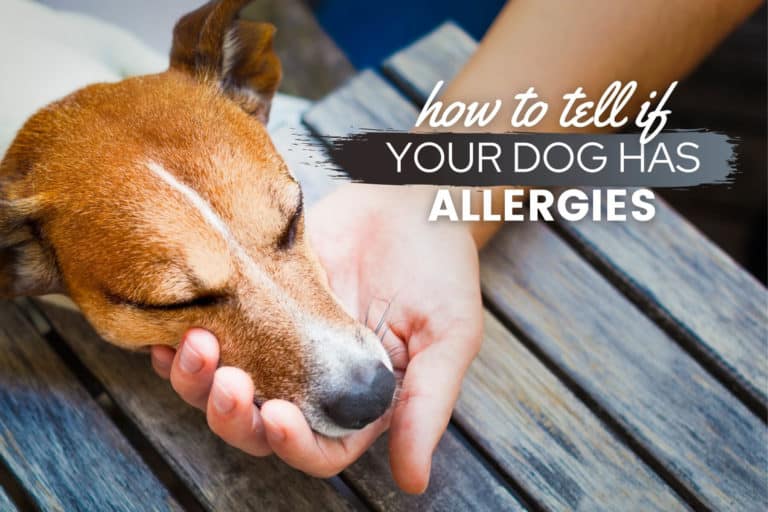
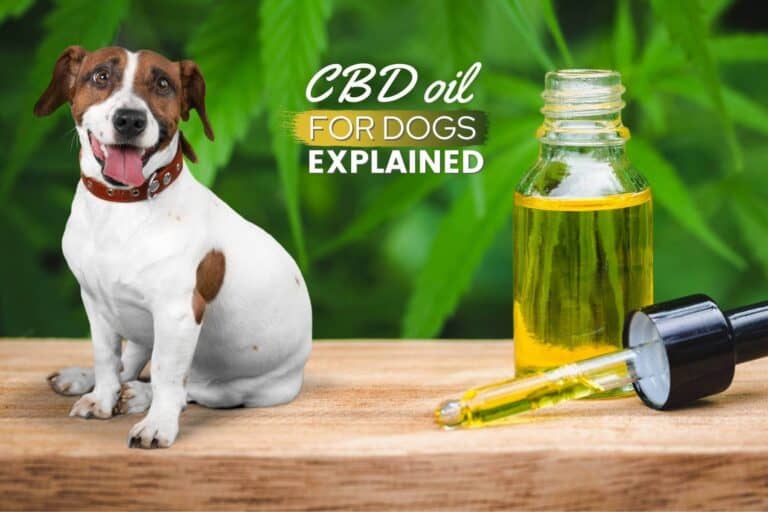
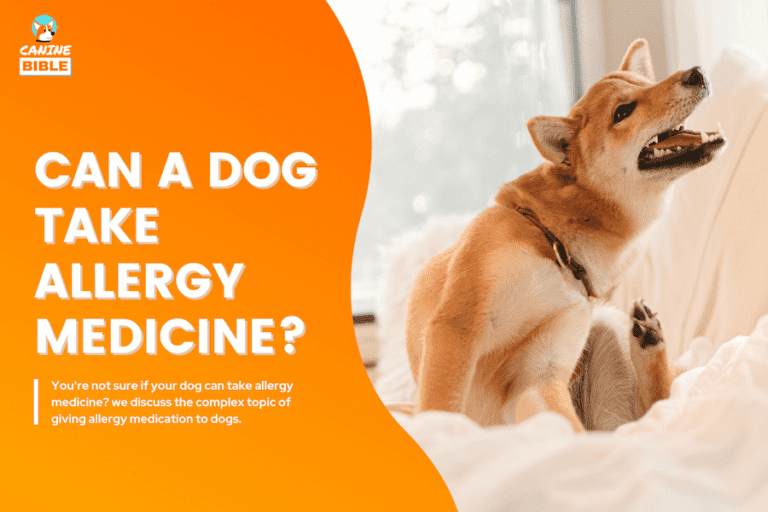
![Dog Allergy Testing Cost: How Much Will You Pay? [Update 2024]](https://www.caninebible.com/wp-content/uploads/2022/08/how-much-does-dog-allergy-testing-cost-768x512.jpeg)
